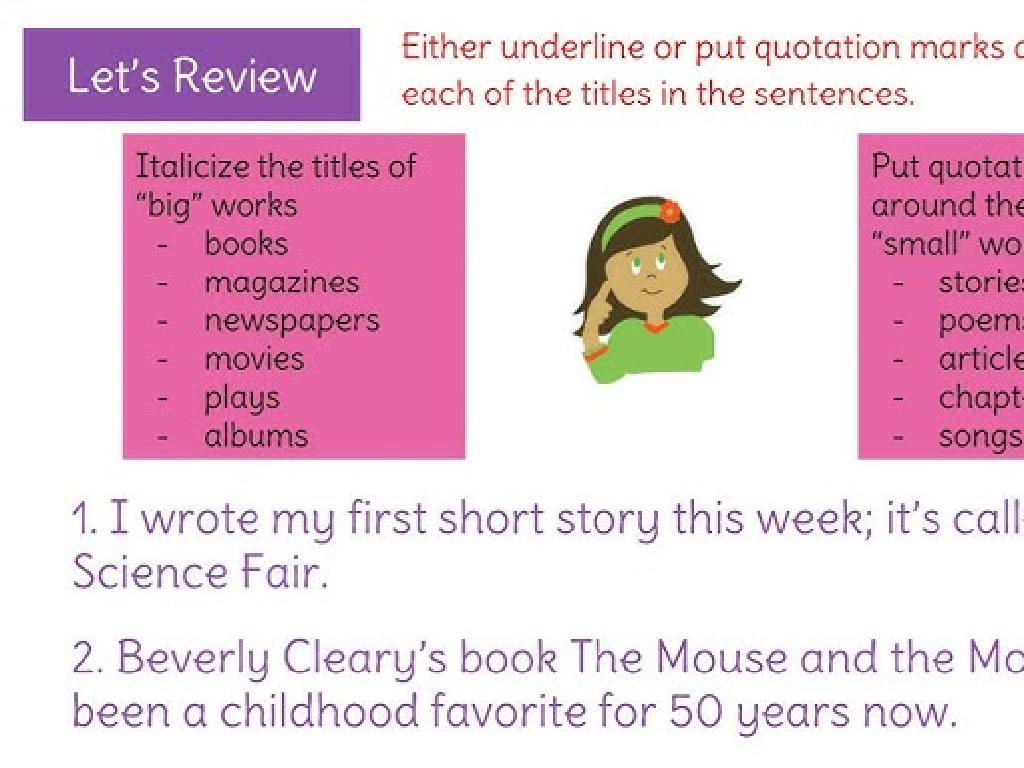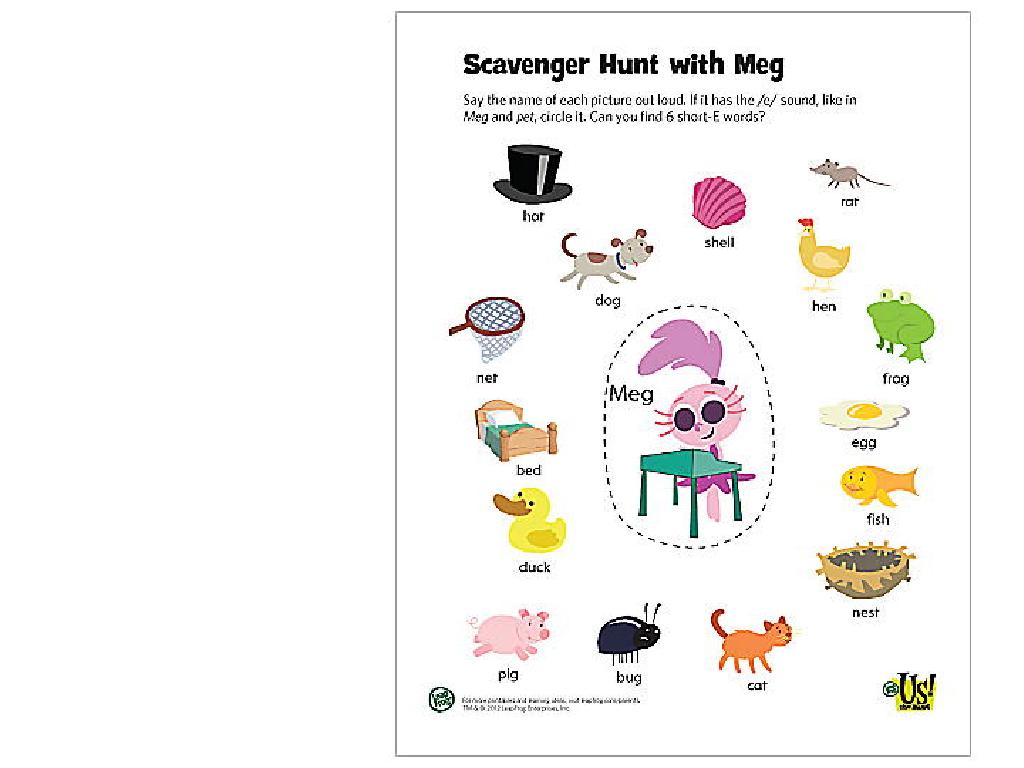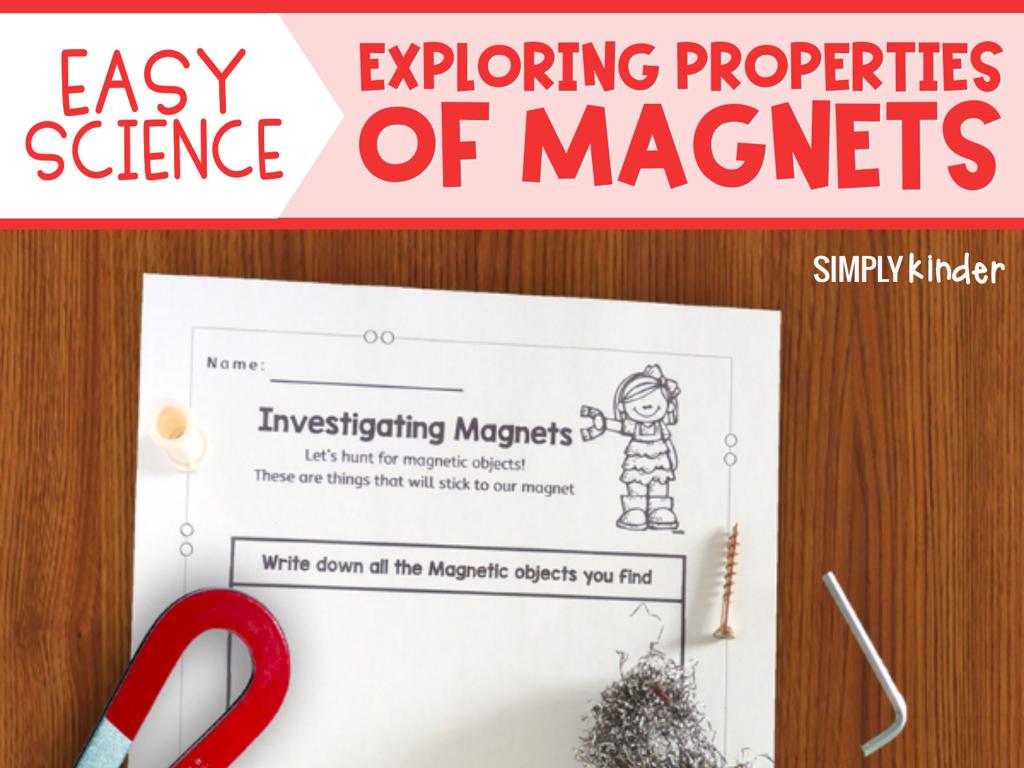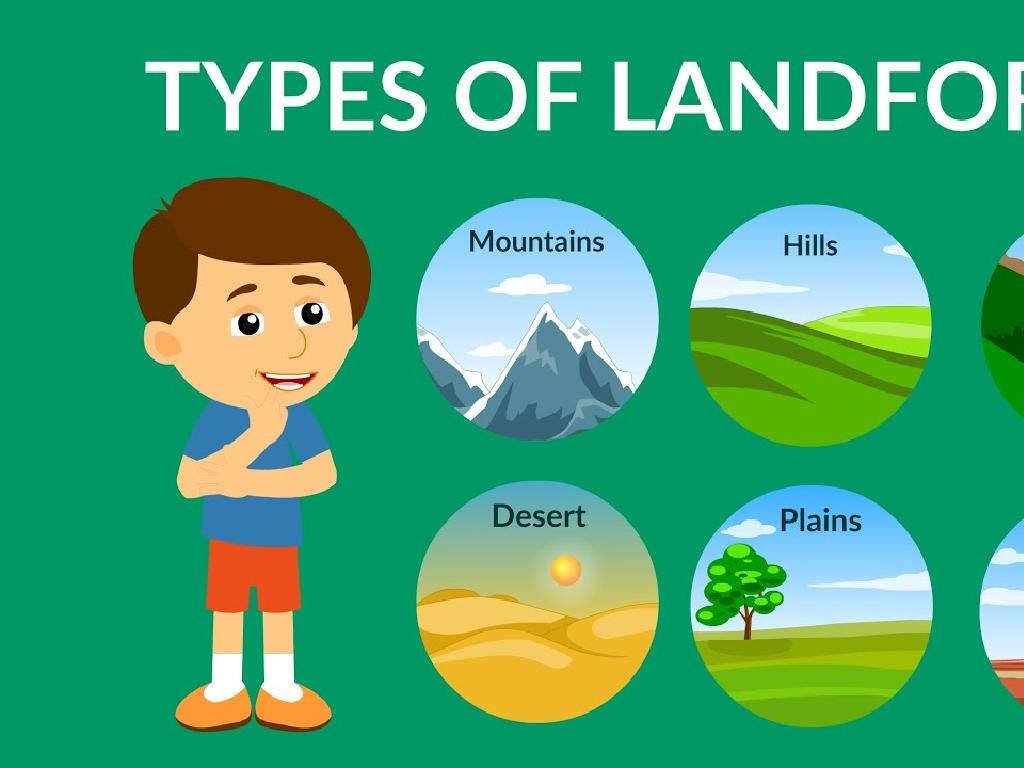Words With -Able And -Ible
Subject: Language arts
Grade: Sixth grade
Topic: Prefixes And Suffixes
Please LOG IN to download the presentation. Access is available to registered users only.
View More Content
Diving into Suffixes: -able and -ible
– Explore word building blocks
– Define prefixes and suffixes
– Prefixes/suffixes modify word meanings
– Today’s focus: ‘-able’ and ‘-ible’
– Suffixes ‘-able’ and ‘-ible’ mean ‘can be done’
– Understanding usage differences
– ‘-able’ often follows a complete word, ‘-ible’ after an incomplete word
|
This slide introduces students to the concept of prefixes and suffixes, the essential components that form many words in the English language. Begin by explaining that prefixes are added to the beginning of a word to change its meaning, while suffixes are added to the end. Highlight today’s focus on the suffixes ‘-able’ and ‘-ible’, both of which turn verbs into adjectives meaning ‘capable of’ or ‘susceptible to’. Discuss the general rule that ‘-able’ is added to words that are still recognizable English words when the suffix is removed, whereas ‘-ible’ is added when the remaining letters do not form a complete word. Provide examples such as ‘enjoyable’ (enjoy + able) and ‘accessible’ (access + ible). Encourage students to think of more examples and to understand the subtle differences in usage between these two suffixes.
Understanding Suffixes: -able and -ible
– Suffixes modify word meanings
– Suffixes can alter a word’s use or meaning
– They attach to word ends
– For example, ‘enjoy’ becomes ‘enjoyable’, meaning something that can be enjoyed
– ‘help’ to ‘helpful’, ‘hope’ to ‘hopeless’
– ‘Care’ becomes ‘careless’, indicating a lack of care
– Focus: -able and -ible suffixes
– These suffixes often turn verbs into adjectives
|
This slide introduces the concept of suffixes to the students, emphasizing their role in changing the meaning or function of a word. By providing clear examples, such as ‘help’ becoming ‘helpful’ or ‘hope’ turning into ‘hopeless’, students can see how suffixes affect word meaning. The focus is on the suffixes -able and -ible, which are commonly used to form adjectives from verbs, indicating the ability or characteristic of something. Encourage students to think of other words they know and how adding -able or -ible might change them. This understanding is foundational for building vocabulary and improving language skills.
Understanding the ‘-able’ Suffix
– When to use ‘-able’
– Meaning: capable of, worthy of
– Example: ‘enjoy’ to ‘enjoyable’
– Something that can be enjoyed
– Example: ‘read’ to ‘readable’
– Something that can be read easily
|
The suffix ‘-able’ is added to verbs to form adjectives, indicating that something can be done (capable of) or deserves a certain action (worthy of). For instance, ‘enjoyable’ refers to something that can be enjoyed, making it pleasant or satisfying. Similarly, ‘readable’ means that something can be read easily or is legible. Encourage students to think of other verbs that can take the ‘-able’ suffix and what the new adjectives would mean. Have them use these words in sentences to demonstrate their understanding of the concept.
Understanding the ‘-ible’ Suffix
– When to use ‘-ible’
– Meaning: capable of, worthy of
– Example: ‘access’ to ‘accessible’
– ‘Accessible’ means able to be reached or entered
– Example: ‘convert’ to ‘convertible’
– ‘Convertible’ means able to be changed in form
|
The suffix ‘-ible’ is added to the end of a base word to form an adjective, indicating that something is capable of or worthy of something. It is often used when the base word is not a complete word in English, or when it comes from Latin. For example, ‘access’ becomes ‘accessible’, meaning that something can be reached or entered. ‘Convert’ becomes ‘convertible’, meaning that it can be changed in form or function. Encourage students to think of other words that end in ‘-ible’ and discuss the meaning it adds to each base word. Have them use these words in sentences to demonstrate their understanding.
Mastering -able and -ible Suffixes
– Patterns over rules for suffixes
– ‘-able’ with complete words
– ‘like’ becomes ‘likable’
– ‘-ible’ with incomplete words
– ‘terr’ as in ‘terrible’, not ‘terrable’
– Remember the exceptions
– ‘responsible’ and ‘accessible’ are exceptions
|
When teaching suffixes ‘-able’ and ‘-ible’, emphasize that there are more patterns than fixed rules. A helpful pattern is that ‘-able’ is often added to complete words, such as ‘like’ to form ‘likable’. Conversely, ‘-ible’ is typically used when the root is not a complete word, like ‘terr’ to form ‘terrible’. However, there are exceptions to these patterns, and these should be memorized. Examples include ‘accessible’ and ‘responsible’, which don’t follow the usual pattern. Encourage students to practice by identifying the root of new vocabulary and deciding which suffix to use, and to create a list of exceptions as they encounter them.
Let’s Practice: -able vs -ible Suffixes
– Identify the root word
– Choose ‘-able’ or ‘-ible’
– If the root is a complete word, use ‘-able’; if not, often ‘-ible’
– Create new words with suffixes
– Use the rules to form words like ‘enjoyable’ or ‘perceptible’
– Share your words with the class
– Discuss why you chose ‘-able’ or ‘-ible’ for each word
|
This activity slide is aimed at helping students understand and practice the use of ‘-able’ and ‘-ible’ suffixes. Start by explaining how to identify the root of a word. Then, guide students on how to decide which suffix to use; ‘-able’ is typically used when the root is a complete word on its own, while ‘-ible’ is often used when the root is not a standalone word. Encourage students to create new words by applying these suffixes and to be ready to share their creations with the class. For the sharing activity, students can explain their choice of suffix, which will reinforce their understanding and provide an opportunity for peer learning. Prepare to offer examples and assist students who may struggle with the concept.
Group Activity: Crafting Words with -able and -ible
– Form small groups of 3-4 students
– Receive a set of root words
– Create words with ‘-able’ and ‘-ible’
– Combine root words with suffixes to form new words
– Share your most creative word
– Think of unique or unusual words to share
|
This group activity is designed to encourage collaboration and creativity while learning about suffixes. Each group will receive a set of root words and work together to create as many words as possible by adding the suffixes ‘-able’ or ‘-ible’. This exercise will help students understand how suffixes can change the meaning of a word and how they are used to form adjectives. After the activity, each group will choose one ‘most creative’ word to share with the class, fostering a sense of community and shared learning. For the teacher: Prepare a diverse list of root words in advance, ensure each group has a mix of easier and more challenging roots, and circulate to assist and encourage groups as they work.
Class Activity: Suffix Hunt
– Engage in a word search puzzle
– Spot words ending with ‘-able’ and ‘-ible’
– Circle the words and note their meanings
– Use a dictionary or context clues to define each word
– Class review of the discovered words
|
This activity is designed to help students recognize and understand words with the suffixes ‘-able’ and ‘-ible’, which often turn verbs into adjectives meaning ‘capable of’ or ‘susceptible to’. Provide each student with a word search puzzle containing a mix of words with these suffixes. Instruct them to circle the words as they find them and use context clues or a dictionary to write down the meanings. After the activity, gather the class and review the words together, discussing the nuances in meaning that ‘-able’ and ‘-ible’ can give to words. This will reinforce their vocabulary skills and understanding of suffixes. Possible variations of the activity could include working in pairs, creating sentences with the discovered words, or even having students design their own word search puzzles for peers.
Wrapping Up: -able and -ible Words
– Review -able and -ible suffixes
– Recall how these suffixes change a verb to an adjective
– Homework: Craft 10 sentences
– Create sentences with words ending in -able and -ible
– Use -able and -ible words
– Ensure each sentence demonstrates the word’s meaning
– Share your work next class
|
As we conclude today’s lesson, let’s recap the key points about the suffixes ‘-able’ and ‘-ible’, which turn verbs into adjectives, often meaning ‘capable of’ or ‘suitable for’. For homework, students are to write 10 original sentences using words that end with these suffixes. This exercise will help reinforce their understanding of how these suffixes function and enhance their vocabulary. In the next class, students will have the opportunity to share their sentences, allowing them to learn from each other’s examples. Encourage creativity and the use of a dictionary or thesaurus to discover new words.






